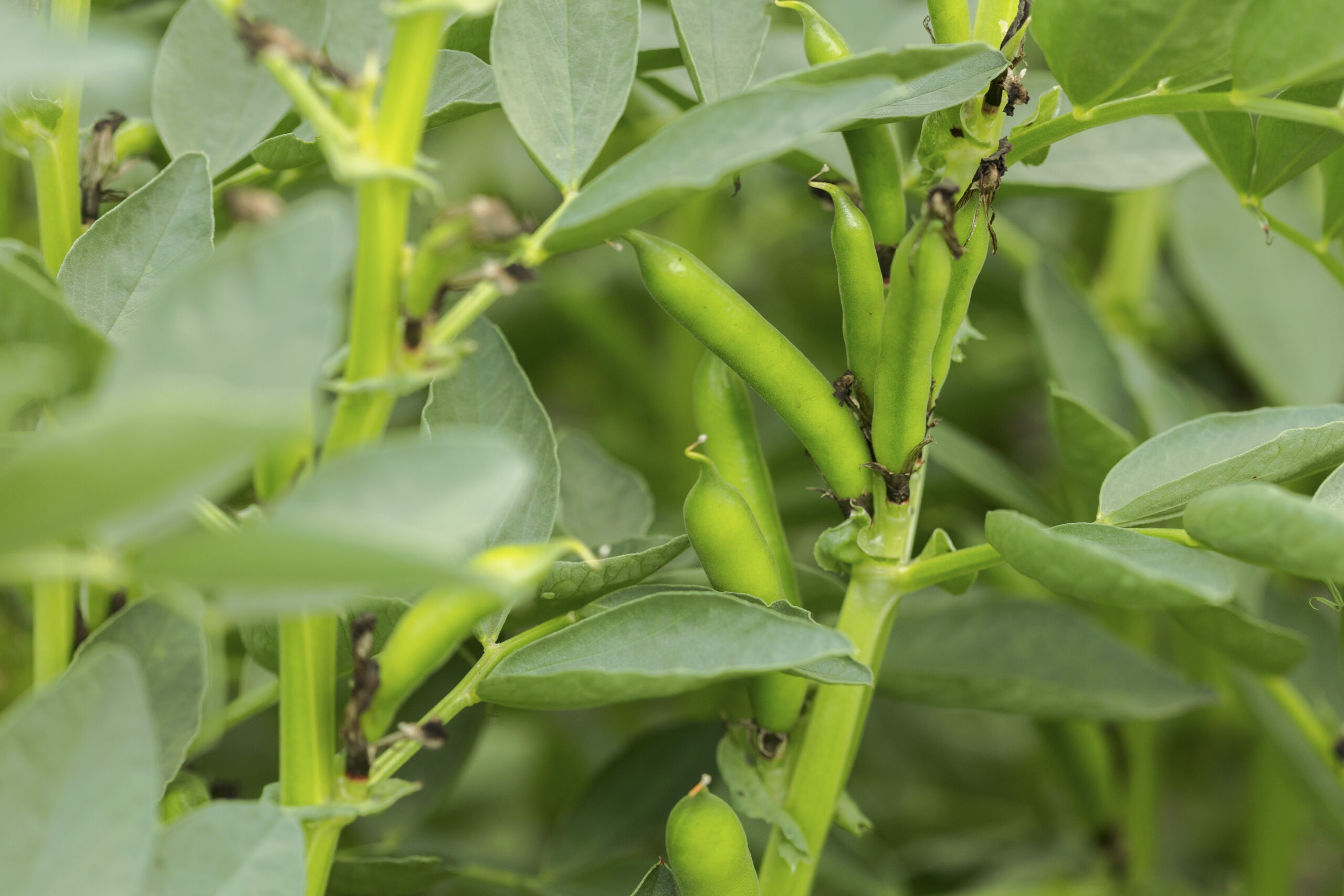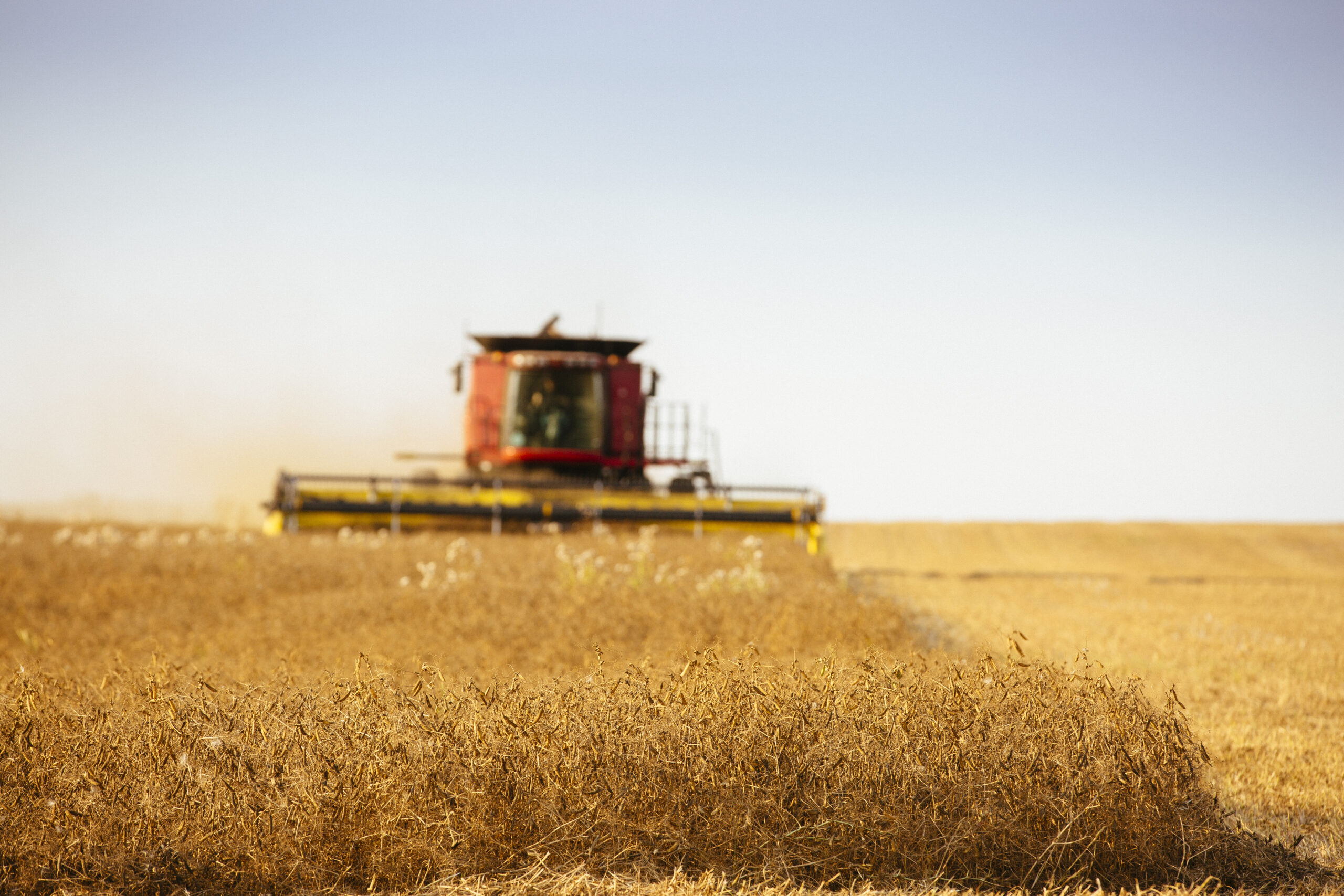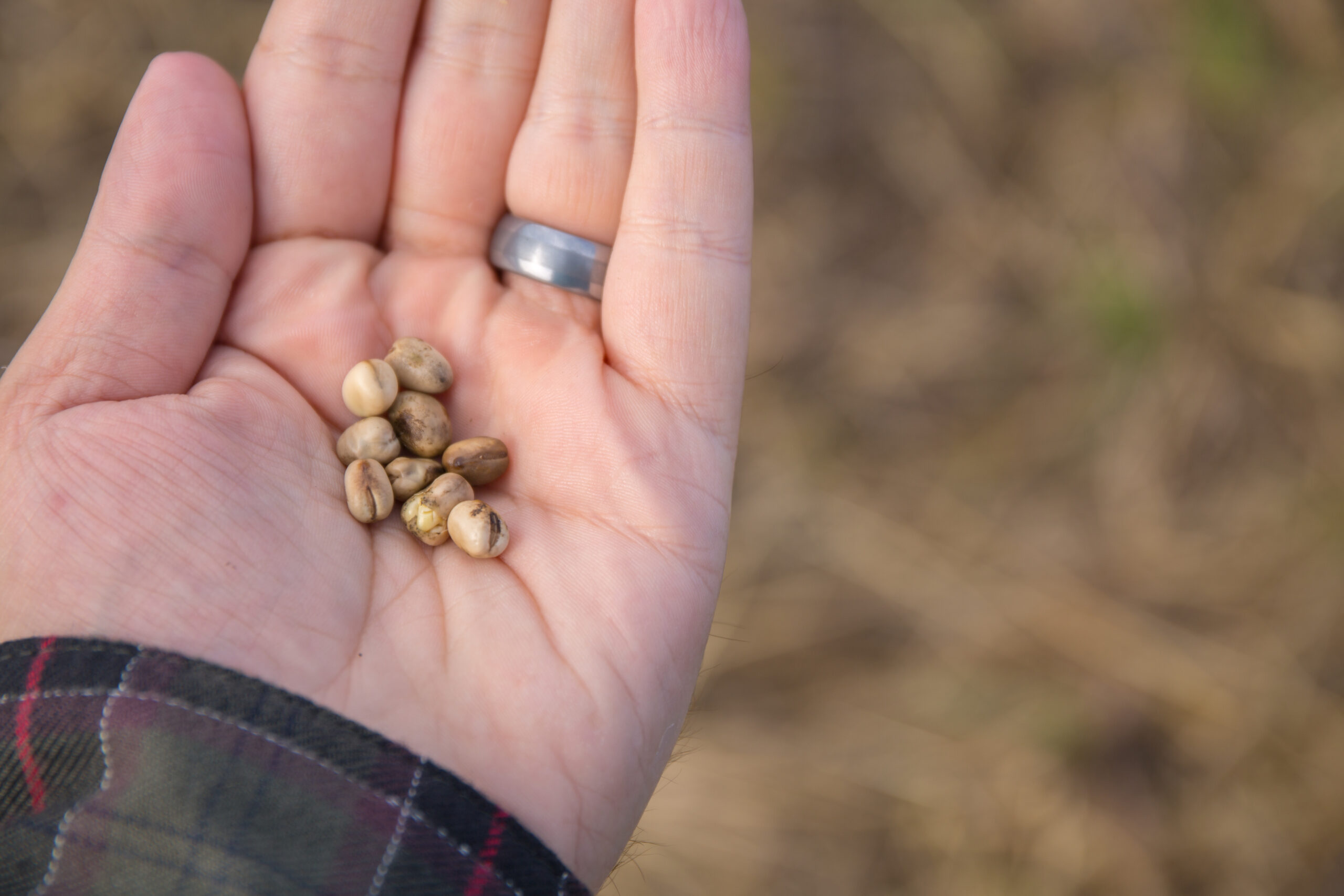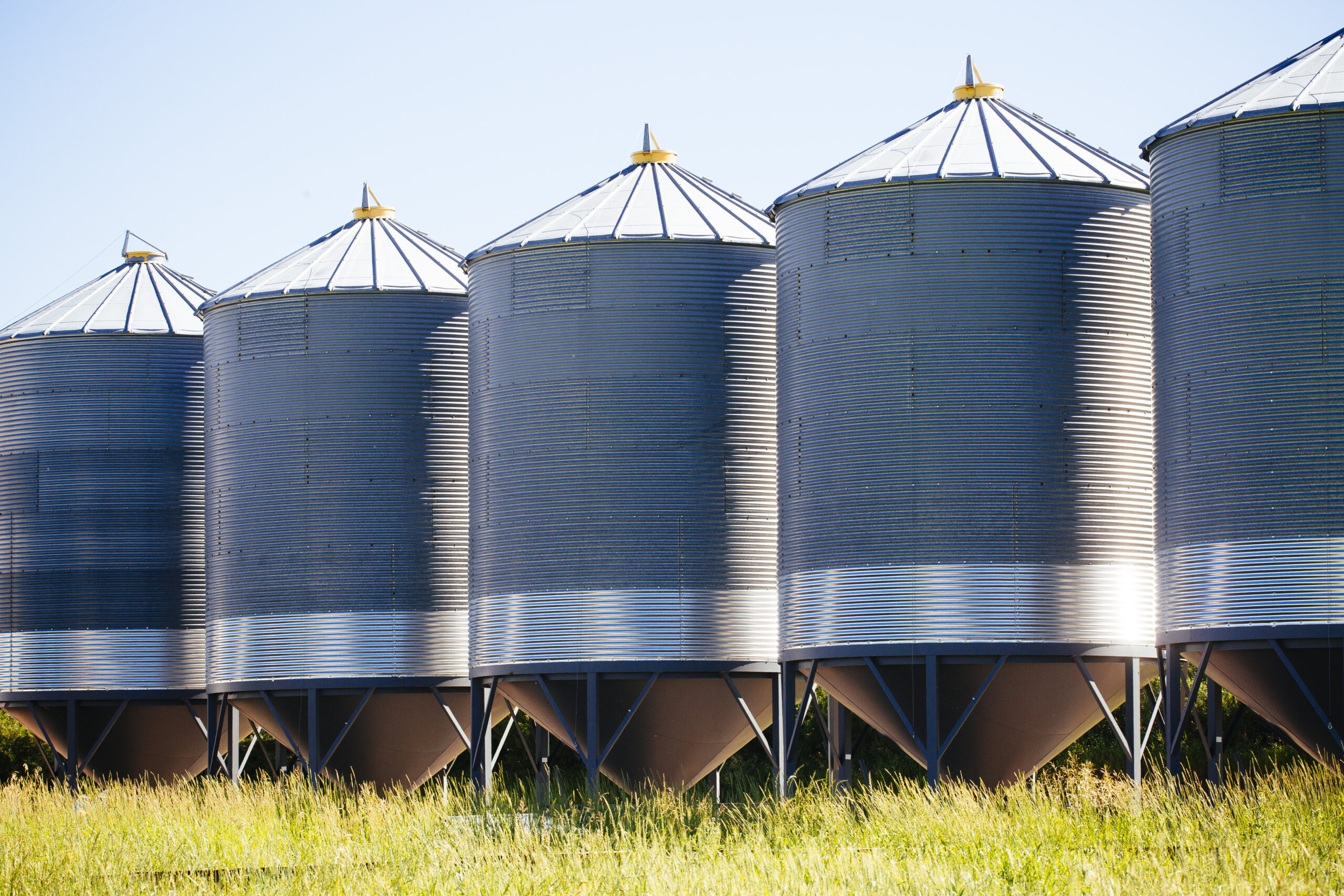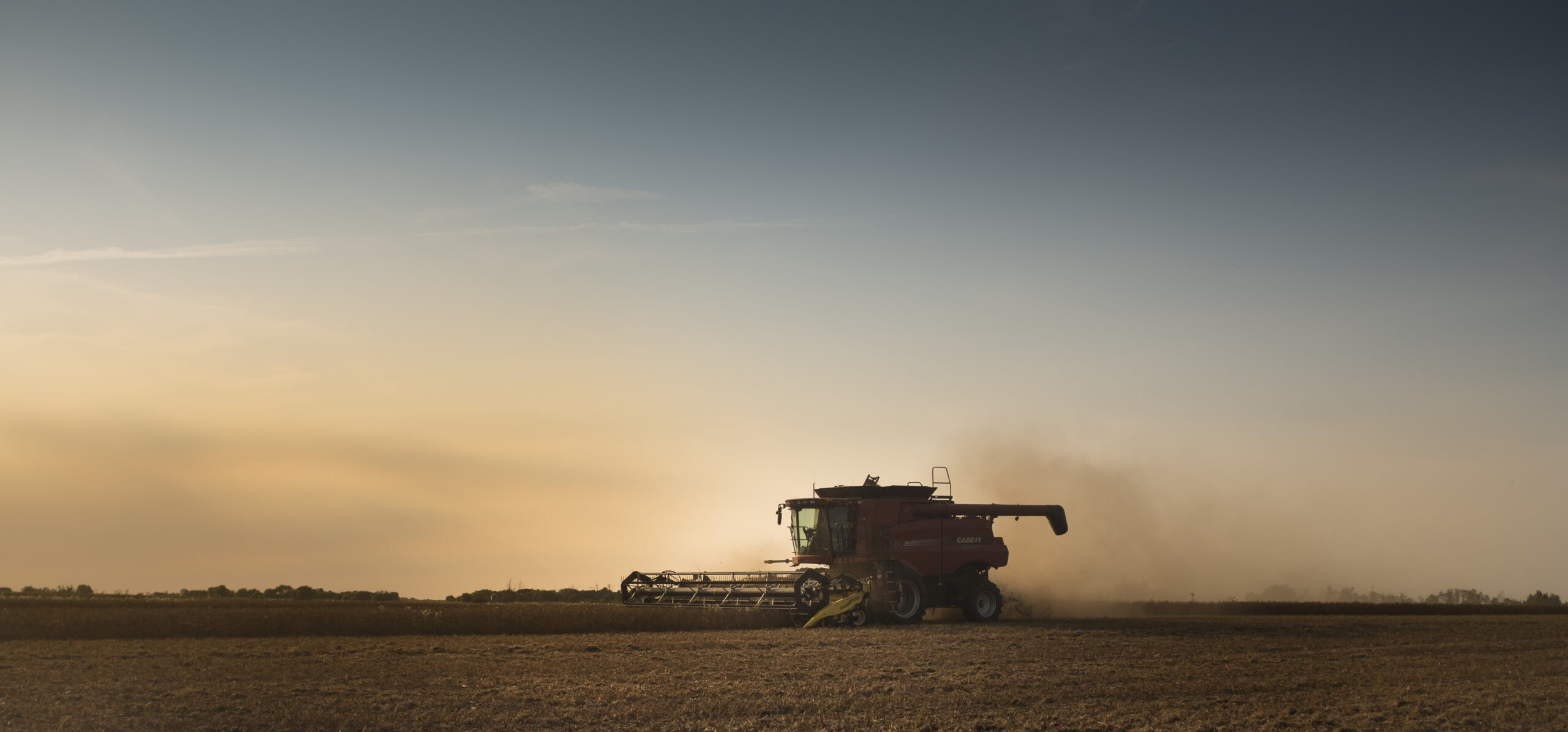Faba beans mature in 110 to 130 days depending on moisture conditions. As the crop matures, the lower leaves darken and drop, the bottom pods turn black and dry from the bottom to the top of the plant. Opinions vary as to the best pre-harvest management. Alberta’s experience has been the best with desiccation and straight cutting, whereas Saskatchewan has found success with swathing. Below is a description of both practices.
Dry-Down or Desiccants
Products registered for use as harvest aid or desiccants before crop harvest in faba beans include Aim®, CleanStart®, diquat, and glyphosate.
Glyphosate is registered for pre-harvest applications on faba beans and may be used to control perennial weeds such as quack grass, Canada thistle, sow thistle, common milkweed, toadflax, and dandelion. Glyphosate can be sprayed when the seed has less than 30% moisture content. At this stage, faba bean stems are green to brown, pods are yellow to brown, and 80–90% of the leaves have dropped.
Glyphosate products currently registered for pre-harvest use in faba beans are Roundup Transorb HC®, Roundup Weather Max®, RT 540®, and Roundup Ultra 2®. Since this glyphosate use is registered under the User Requested Minor Use Label Expansion (URMULE) program, the manufacturer assumes no responsibility for herbicide performance. Those who apply glyphosate on faba beans do so at their own risk.
Diquat is a registered desiccant for faba beans. Diquat should be applied when most plants are ripe and dry. At this stage, the pods are filled, and the bottom pods will be tan or black in colour. Always read and follow label directions before applying.
Swathing
Faba beans may shatter if left standing until full maturity. The crop should be swathed when about 25% of the plants in the field have the lowest one to three pods turning dark. By this time the uppermost pods should be fully developed, and the middle pods will be turning light green. At this stage, the moisture content of the most mature seeds may be over 40% and the seeds in the upper part of the plant may have moisture content over 60%. A light narrow swath should be used as the crop may take up to three weeks to dry once cut.
Combine when the moisture content of the seed is at 18–20%. Combining in the early morning may reduce seed damage if the moisture content is lower than 18–20%. Combines should be set with maximum concave clearance, high fan speed, and reduced cylinder or rotor speed (300–400 rpm). Augers should be operated at low speeds to avoid splitting. To reduce seed coat cracking, minimize drop distances when moving faba bean seed. Harvested seed should be aerated to 16% for safe storage.
Do not plan to straight-cut faba beans without desiccation. Straight-cutting faba beans that have not been chemically dried down will most likely result in significant shattering losses.
Make every effort to harvest your faba bean crop in the fall. Overwintered faba beans left in the swath will develop toxic moulds and be unsuitable for sale, even as livestock feed.
Storage
Faba bean seed often respires or sweats after it is placed in storage. Extra care should be taken to monitor the grain inside the bin for moisture build-up or spoilage. Aeration fans can be used to cool the grain in the fall and warm it in the spring, as well as to reduce moisture condensation in the bin. Seed is more susceptible to cracking and peeling if handled at temperatures below -20°C.
If heat drying is necessary, a maximum temperature of 32°C is recommended. Dry in two stages, with a day between operations, if more than 5% moisture is to be removed. The maximum seed moisture recommended for safe storage is 16%.
Most varieties of faba bean seed that contain tannins will darken over time and should not be stored for two summers.
